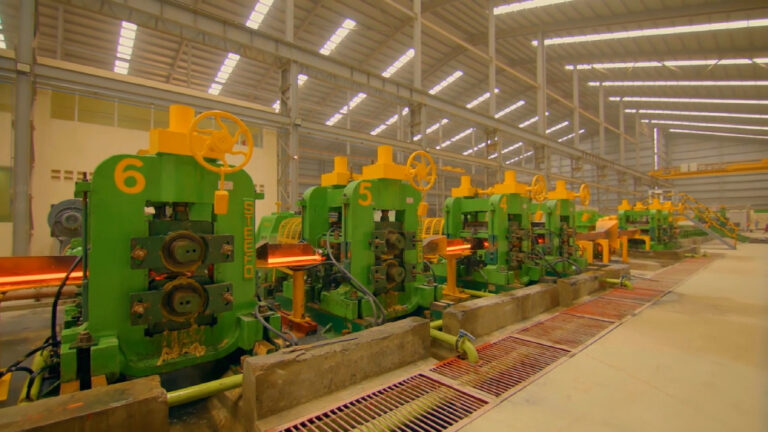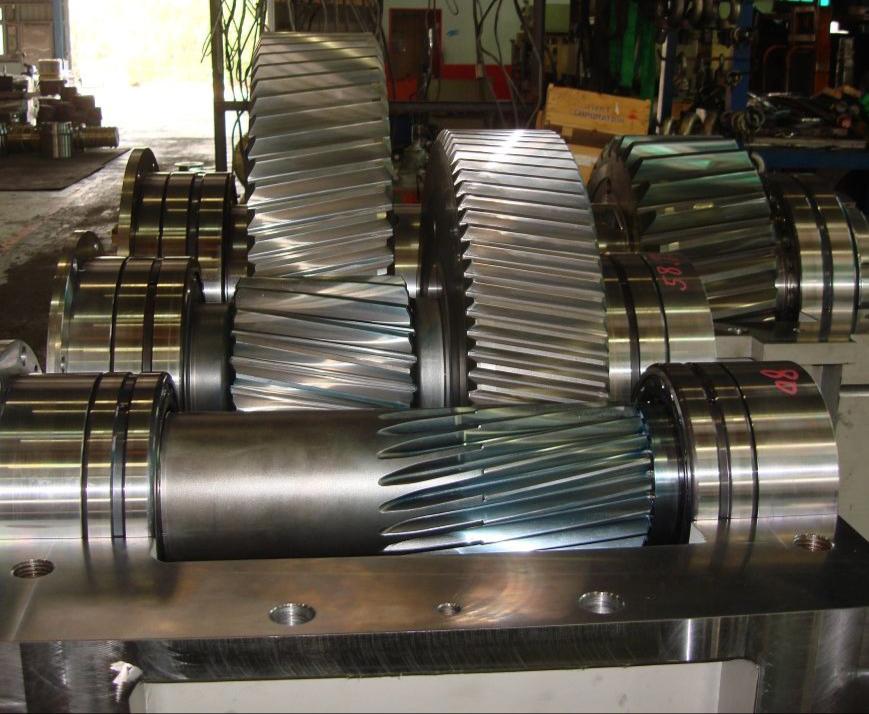In the competitive world of steel production, efficiency, quality, and reliability determine long-term success. While equipment is at the heart of any steel plant, the relationship between a plant and its suppliers defines how well that equipment performs throughout its lifecycle. Traditionally, rolling mill manufacturers were viewed simply as suppliers of machinery—delivering equipment, fulfilling warranties, and moving on. But in today’s evolving industry, that perception is shifting rapidly.
Forward-looking manufacturers are no longer just vendors; they are technology partners. They provide expertise, continuous support, and innovative solutions that help steel plants remain competitive, sustainable, and future-ready. This partnership approach transforms rolling mills from just being operational assets into long-term enablers of growth.
The Traditional View of Rolling Mill Manufacturers
For decades, rolling mill manufacturers were often considered only as vendors in the procurement process. Their role was limited to designing and delivering machines that met basic technical requirements. Once installation was complete, responsibility largely shifted to the plant operators.
This transactional relationship came with several challenges:
- Lack of strategic alignment: The focus was on immediate costs rather than long-term value creation.
- Operational inefficiencies: Plants often faced unexpected downtimes due to limited after-sales support.
- Knowledge gaps: Without continued guidance, operators struggled to optimise rolling mills for consistent performance.
When steel plants treat the purchase of machinery as a one-time transaction, they miss opportunities for efficiency, innovation, and cost savings. The result is higher operational risk, unplanned expenditures, and, over time, reduced competitiveness in the market.
Rolling Mill Manufacturers as Technology Partners
Modern rolling mill manufacturers such as The Steefo Group have redefined their role in the steelmaking ecosystem. Instead of being equipment suppliers, they are now long-term collaborators who work alongside steel producers to ensure operational excellence.
This partnership approach involves:
- Collaboration from design to commissioning: Manufacturers consult with plants during the design phase to customise rolling mills for specific production needs. They provide insights on layout, automation, and material flow to improve efficiency.
- Risk reduction through expertise: By partnering with experienced manufacturers, plants minimise technical risks such as mismatched designs, incorrect sizing, or underperforming equipment.
- Ongoing performance assurance: Through monitoring, training, and after-sales services, manufacturers help steel plants achieve consistent quality and productivity.
By viewing rolling mill manufacturers as technology partners, steel plants gain not just equipment but also a roadmap for continuous improvement and innovation.
Lifecycle Support: Why It Matters for Steel Plants
One of the most valuable aspects of partnering with rolling mill manufacturers is lifecycle support. Steel plants operate in demanding environments where downtime can translate into significant financial losses. Continuous support ensures rolling mills remain productive, efficient, and safe throughout their operational life.
Key elements of lifecycle support include:
- Maintenance schedules and predictive servicing: Manufacturers develop preventive maintenance plans tailored to the specific design of the mill. With predictive technologies, they can anticipate failures before they occur, minimising downtime.
- Spare parts availability and supply chain assurance: Having a reliable partner ensures that critical spare parts are always accessible, reducing delays in case of breakdowns.
- Training and skill development: Skilled operators are essential for optimal mill performance. Manufacturers often provide training programs to equip plant personnel with the knowledge to run, maintain, and troubleshoot the equipment effectively.
- Extending equipment life: Through inspections, refurbishments, and upgrades, manufacturers help plants maximise the lifespan of their rolling mills, delaying the need for costly replacements.
For example, a plant that integrates lifecycle support may achieve 20–30% longer equipment life compared to those relying only on internal maintenance teams. This translates into higher return on investment and more predictable operations.
Upgrades and Plant Modernisation
The steel industry is evolving at a pace never seen before, driven by rising demand, stricter sustainability standards, and rapid digital transformation. In this environment, plant modernisation is not just an option—it’s a necessity.
Rolling mill manufacturers play a central role in this transformation by offering:
- Automation upgrades: Advanced control systems improve precision, reduce waste, and ensure consistent quality in steel output.
- Digital controls and IoT integration: Smart technologies enable real-time monitoring, predictive analytics, and data-driven decision-making. This leads to improved efficiency and reduced downtime.
- Energy efficiency improvements: Manufacturers design modernisation solutions that lower energy consumption, aligning with global sustainability goals and reducing operational costs.
By providing modernisation pathways, rolling mill manufacturers enable steel plants to remain agile and competitive in a market where efficiency and sustainability are crucial differentiators.
The ROI of Long-Term Partnerships with Rolling Mill Manufacturers
When steel producers view manufacturers as long-term partners rather than one-time vendors, the return on investment (ROI) extends far beyond the initial purchase price of the machinery. Partnering with experienced rolling mill manufacturers creates measurable and intangible benefits that directly influence profitability and competitiveness.
- Cost savings through reduced downtime: Unexpected breakdowns can halt production and cause huge financial losses. With lifecycle support, predictive maintenance, and a strong spare parts network, rolling mills operate with fewer interruptions. Even a single day of avoided downtime can offset months of maintenance costs.
- Better quality steel output: Quality directly impacts the reputation of a steel producer. Partnering with manufacturers ensures rolling mills are optimised for precision, resulting in consistent product quality. This translates into higher customer satisfaction, fewer rejections, and stronger market competitiveness.
- Faster response to industry shifts: Steel demand is influenced by global infrastructure projects, construction booms, and technological changes. Rolling mill manufacturers provide upgrades and modernisations, such as automation and IoT integration, that enable plants to adapt quickly to market demands without overhauling the entire setup.
- Tangible vs. intangible returns: Tangible benefits include extended equipment lifespan, improved productivity, and lower energy consumption. Intangible benefits, while harder to measure, are equally valuable: enhanced trust between partners, smoother collaboration, faster innovation adoption, and a reputation for reliability in the global marketplace.
Together, these outcomes prove that a partnership model with rolling mill manufacturers delivers far greater ROI than transactional vendor relationships.
Key Qualities to Look for in a Rolling Mill Manufacturer Partner
Not all rolling mill manufacturers offer the same level of expertise or commitment. When selecting a partner, steel producers should evaluate qualities that ensure long-term alignment with their business objectives.
- Proven expertise in different types of rolling mills: A capable partner should have a strong track record across various mill types, hot rolling mills, cold rolling mills, section mills, and bar mills. This ensures they understand diverse operational requirements and can tailor solutions accordingly.
- Global service network and responsiveness: In today’s interconnected world, steel producers may serve multiple regions. A rolling mill manufacturer with a global service footprint ensures quick support, wherever the plant is located. Responsiveness in emergencies is critical to keeping production uninterrupted.
- R&D and innovation focus: The steel industry is undergoing digital transformation, with automation, artificial intelligence, and sustainability playing central roles. Manufacturers investing in research and development provide forward-looking solutions that future-proof their clients’ operations.
- Transparency in after-sales support: Clear communication, documented service agreements, and visible commitment to spare parts availability are markers of a reliable partner. Plants should look for manufacturers who prioritise long-term relationships over short-term sales.
Choosing a rolling mill manufacturer with these qualities lays the foundation for a partnership that can withstand evolving industry challenges.
Why Buyers Should Shift from Vendor to Partner Mindset
For many steel producers, the greatest challenge is not technical—it’s strategic. Viewing manufacturers as transactional vendors may appear cost-effective in the short term, but it often limits growth potential. A partner mindset brings significant long-term benefits:
- Future-proofing investments in steel production: Steel plants that collaborate with manufacturers gain access to regular upgrades, training, and modernisation solutions. This prevents technology obsolescence and ensures that the rolling mills remain competitive even a decade after installation.
- Building trust and technical alignment: When manufacturers work closely with plant teams, they gain a deeper understanding of operational challenges. This alignment allows them to recommend customised solutions, streamline processes, and ensure reliability. Over time, mutual trust reduces friction in decision-making and accelerates project execution.
- Long-term competitive advantage in global steel markets: With globalisation, steel producers must meet international quality standards while controlling costs. A strong partnership with a manufacturer enables plants to deliver consistent, high-quality output while maintaining operational efficiency. This creates a sustainable edge over competitors relying on one-off purchases.
Shifting to a partnership model is not only about equipment, it’s about ensuring resilience and adaptability in an unpredictable global market.
Partner with a Leading Rolling Mill Manufacturer for Long-Term Success
In today’s dynamic steel industry, equipment alone cannot guarantee success. You need a partner who stands with you at every step. The Steefo Group, a trusted name among leading rolling mill manufacturers, goes beyond machinery to deliver expertise, innovation, and end-to-end support that empower your plant for the future. From design consultation and installation to lifecycle maintenance, modernisation, and operator training, Steefo ensures your rolling mills achieve peak performance year after year.
Future-proof your investments with a partner that acts as your true technology ally. With Steefo by your side, you can enhance efficiency, ensure superior steel quality, minimise downtime, and stay ahead of industry shifts.
Ready to elevate your steel plant’s potential? Choose The Steefo Group and unlock long-term competitive advantage. Call us at +91 87589 98607 or send us an email to marketing@thesteefogroup.com for further information about our products and services.




